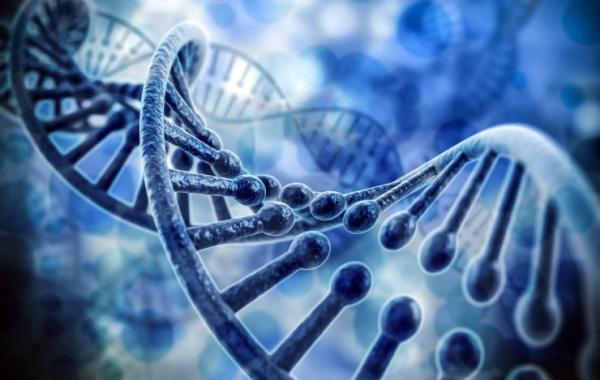Keeping Tabs on Electron Flow

DNA Barry story
One of the most basic processes in nature is the transfer of electrons from one molecule to another. For example, this flow of electrons is essential in the critical biological processes of photosynthesis, respiration, and DNA synthesis.
Electron transfer involves the generation of highly reactive intermediates, called radicals. A fundamental question in biological chemistry is how the movement of electrons is controlled and radical-induced damage is prevented.
The lab of Bridgette Barry at the Petit Institute for Bioengineering and Bioscience is helping to provide an answer with their research paper, “A tyrosine-tryptophan dyad and radical-based charge transfer in a ribonucleotide reductase-inspired maquette,” published last month in the journal Nature Communications.
A large number of different proteins – especially metalloproteins like ribonucleotide reductase (RNR) – can mediate a high-energy flow of electrons. Often, the movement of electrons involves hopping between aromatic groups, such as tyrosine and tryptophan. In RNR and other proteins, these aromatic amino acids have complex interactions with each other and with other components of the protein. Often, tyrosine and tryptophan are found in close proximity. Because proteins like RNR are complex, it is difficult to determine the functional role of these tyrosine-tryptophan pairs or “dyads.”
To better understand their role, Barry, a professor in the School of Chemistry and Biochemistry, and her collaborators designed and characterized a peptide model of RNR. This model or maquette contains a tyrosine-tryptophan pair, but has a much simpler structure than RNR. The results showed that an unpaired electron is shared between a tyrosine-based radical and the nearby tryptophan. This transfer of charge between the tyrosine and tryptophan may be critical in directing a flow of electrons and in protecting the protein from damage.
Ultimately, the lab’s findings could have implications for cancer biology. A hallmark of cancer is rapid cell proliferation. RNR is an iron-dependent enzyme that is essential for DNA synthesis. If you can inhibit the rapid synthesis of DNA, you can prevent cancer cells from proliferation. So, Barry and her team are learning more about RNR and its electron transfer pathway.
“When we understand the mechanism of a protein, we are better at designing inhibitors and useful drugs,” says Barry, whose co-authors for the Nature Communications paper are Cynthia Pagba, Tyler McCaslin, Gianluigi Veglia, Fernando Porcelli, Jiby Yohannan, Zhanjun Guo, and Miranda McDaniel.
Veglia is a faculty member at the University of Minnesota, and Porcelli is a faculty member of the University of Tuscia in Italy. The other coauthors are or were students in the School of Chemistry and Biochemistry and two of them – McDaniel and Yohannan – contributed to the research as undergraduates.
CONTACT:
Jerry Grillo
Communications Officer II
Parker H. Petit Institute for
Bioengineering and Bioscience
